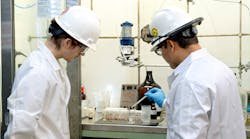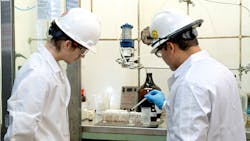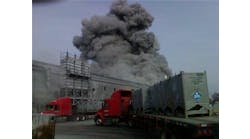The concept of corporate sustainability applies to all parts of an organization’s products and processes, from the sourcing of materials to packaging to accounting practices. As such, sustainability should not be treated as an afterthought or as something to address at the end of a project. Weaving these critical practices throughout the fabric of an organization’s culture benefits more than just the environmental, social, governance section of its annual report. Sustainability delivers on the triple bottom line, contributing to success through positive impacts to people, the planet and prosperity.
In the chemical industry, sustainable operations begin with process design, which dictates key factors such as energy efficiency, yields and selectivity that affect emissions and waste production. Company leadership plays an important role in prioritizing sustainability as the foundation of process design and project objectives, improving outcomes with streamlined methods and economic robustness. The following tactics can help chemical processing plants build a culture of sustainability-first process design through employee education and mentorship, new technology and leadership support.
Define Sustainability Goals
With so many variables in chemical processing, organizations must define how sustainability applies to their operations and how they plan to measure those outcomes. The U.S. Environmental Protection Agency (EPA) says the goal of chemical process sustainability is to “minimize resource use, prevent or reduce releases and increase the economic feasibility of a chemical process.” These principles of sustainability are not new, but rather an evolution of the practices that legendary chemical industry safety expert Trevor Kletz introduced in the 1970s with his Inherent Safety Principles. Kletz believing that industry should avoid dangerous situations, developed these principles and promoted them throughout his career[1]: eliminate the potential for harm; reduce the severity or scale of the consequences; reduce likelihood of occurrence; and separate people [from the hazard]. The EPA’s GREENSCOPE tool is another resource that chemical processing organizations can use to quantify process sustainability, focusing on the areas of material efficiency, energy, economics and environmental performance.
Both of these principles can be incorporated into safety policies which naturally parallel many sustainability goals, such as:
- Minimization: Using smaller volumes can reduce the impact of spills, events and capital costs.
- Substitution: Are there non-hazardous or bio-based materials that will achieve the same results?
- Moderation: Consider reduced operating conditions that can contain and eliminate releases.
- Simplification: Simplifying the process design can lead to better economic feasibility and robustness.
Develop Project Objectives Consistent with Sustainability
In the early stages of a project – whether a new product or process technology implementation – chemical plant operators should explore different or novel design options and their implications. For example, would continuous-flow chemistry provide energy savings over a batch reactor? In certain applications, a flow reactor’s design could allow for more efficient heat transfer and a faster mixing speed with its multiple input channels. For a more sustainable process, teams should also challenge the need for and the use of waste treatments such as aqueous and vapor emissions. Can different operating conditions or alternative materials decrease or eliminate waste, or could the byproducts be captured for reuse? With a sustainability mindset embedded in an organization’s vision and values, researchers will feel empowered to explore and suggest new ideas that employ emerging technologies while still meeting the objectives of all parties and customers.
Support from the Top
The best way to empower employees to design for sustainability is to show them they can count on support from leadership. Corporate leadership can foster this culture by expecting, encouraging and supporting process design considerations that have positive impacts on sustainability. High-visibility actions range from investing in new environmentally friendly technology, such as circular plastics applications, to recognizing and celebrating sustainability successes throughout the organization. By cultivating values and tenets of operation that prioritize the planet and people’s safety, leadership can create a culture where sustainability principles form the basis of all designs and projects. Conversely, when project goals are not met, prompt determination of the cause and remedial action is necessary through support from the top. Engineers who know that their executive teams are aligned with and overtly support a common goal for inherently safer design are empowered to get the most important things right in a less constrained environment.
Offer Training, Education and Mentoring Opportunities
Giving employees the tools and resources to learn more about sustainable process design also demonstrates the organization’s commitment to the triple bottom line. Train personnel by offering or sponsoring relevant courses and certification programs. Encourage continuing education in design considerations such as inherent safety, safety design and process intensification. Create opportunities for experienced engineers and chemists who are well-versed in sustainability practices to share their knowledge with junior employees and students such as co-ops, internships and mentorship programs. The combination of classroom learning, real-world case studies and project history will help develop a pipeline of employees with an in-depth understanding of sustainability and how to apply it when designing processes, objectives and outcomes.
By continuously valuing sustainable practices and showing their support, leadership teams can help make sustainable design choices second nature to their employees in all phases of research and production. Sound, simple process design promotes prosperity for the organization, particularly in times of cyclical market conditions and supply chain challenges. Chemical processing companies should determine their organization’s goals, help their employees become more knowledgeable about sustainable design considerations, and consistently applaud their team’s progress to help build a culture that truly thrives with sustainability at its core.
[1] https://www.chemengevolution.org/processes-safety/safety/inherent-safety-and-inherently-safer-design




